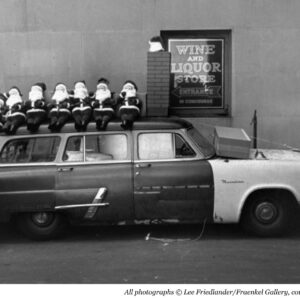
Opening night at Volta art fair on Pier 90 in New York City. A long tour across the 1,000-foot long terminal to visit exhibitions from over 100 galleries. The once-concrete pier is now covered in wall-to-wall carpet and tonight is electric with conversations, greetings, and congratulations. I asked a few artists about their favorite books, and the role (if any) literature plays in their creative lives.

JORGE PINEDA (Lucy Garcia Gallery, Santo Domingo. Volta booth D10)
Art: Ciguapa, acrylic and charcoal on paper (2015)
Papi, by Rita Indiana Hernández: “Rita Indiana Hernández is from the Dominican Republic and is I think for me, the best novelist in the last 20 years. If you want to understand Dominican society today you have to read her books, in particular Papi, a journey about a young girl becoming an adult. This book offered a lot of images that I think at some point I use in my works and this work,” he says, pointing to the drawing pictured above right, “you could say is the cover of her book. The name of the piece is Ciguapa and is based on a myth from the Dominican Republic about the Tainos people surviving when Columbus arrives—it is a beautiful story of how they take care of their children, and of being exiled and home. When society runs from something how are they running?”

AARON JOHNSON Stux Gallery, New York. Volta booth D14
Art: Turkey Pistol Dinner, acrylic and socks on linen (2015)
Autobiography of Red, by Anne Carson: “A fantastical mythological verse novel about a boy with wings who is perceived as a devil child by some people, it’s a beautiful and grotesque book, based in part on mythology. I get weird visuals from a book like this… the actual narrative is ambiguous at points so I can take that and let my imagination generate its own images as I slowly forget the book. The images from her work fade and go in a different direction as I create. I’m also drawn to Southern Gothic themes, and I’m influenced by music, in particular Nick Cave whose book I also read.” (The Death of Bunny Munro)

DEREK FORDJOUR Papillion Art, Los Angeles. Volta booth E3
Art: Clubhouse, oil, acrylic and foil on wood panel (2015)
Race Horse Men, by Katherine C. Mooney: “This painting was specifically inspired by Katherine Mooney’s Race Horse Men, about a privileged class of slaves. I’m looking for things that have been true and continue to be true over long periods of time, and to make a painting that will also have meaning over long periods of time, she parses some of the ideas that inspired me. Another book that continues to inspire me is Alan Guttman’s Sports and American Art from Benjamin West to Andy Warhol; it’s about the role that art and sports play in society, and how they are both non-essential and persistent through culture and occupy a similar space in the social realm, because they have no utility—the outcome of the game doesn’t really matter… art…”

AN TE LIU Galerie Division, Montreal, Toronto. Volta booth A5
Art: Tropos (for Djuna Barnes), Tropos (for Gertrude Stein), Tropos (for Elsa von Freytag-Loringhoven), Sculptures cast hydrostone with pigmented wax and cast concrete (2014)
Composition as Explanation, by Gertrude Stein: “Gertrude Stein is one of my great influences, the Tropos are named for three female poets who are important for me. But perhaps my all-time favorite book is Seeing Is Forgetting the Name of the Thing One Sees by Lawrence Weschler.”
JOSEPH DESLER COSTA
Foley Gallery, New York. Volta booth C17
Art: Cyan Palm Pass Through, 20, Dye Sublimation on Aluminum (2015)
The Flamethrowers, by Rachel Kushner: “There’s a riot in a Fiat factory, there’s industrialism and speed”. Costa’s uses in-camera photography techniques, collage, studio construction and ever means possible except digital technology to explore algorithms of the human nervous system in a body of work called Extreme Learning Machine.
VOLTA NY is an affiliate of the Armory Show, March 3-6, 2013
Catherine Talese
Catherine Talese is a freelance photography director, and has served as photo editor at Absolute Magazine, GQ, and Men's Health Living, among others. She is also a contributor editor at Literary Hub.














